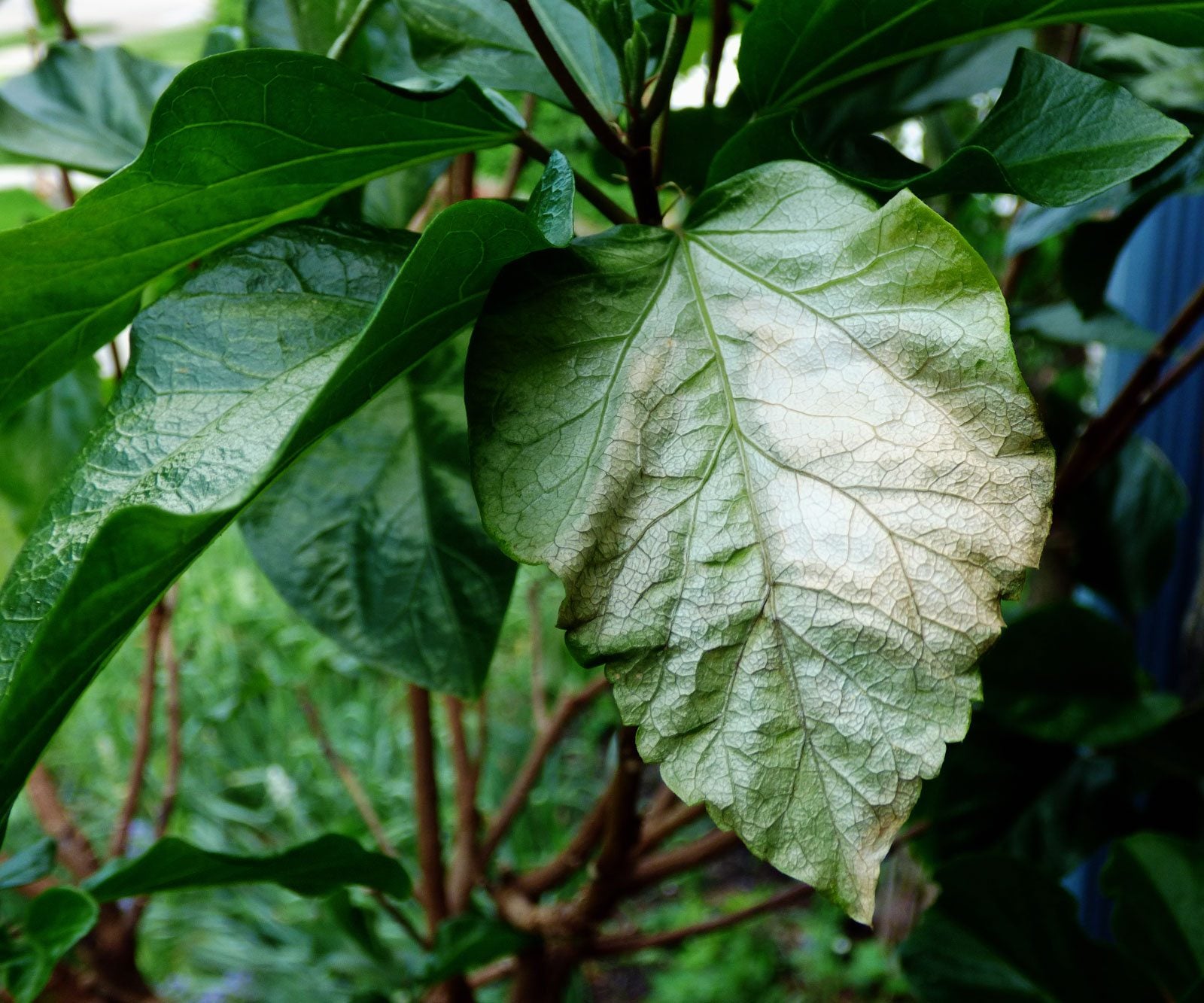Plant Leaves Turning White Or Pale: Learn About Plant Sunburn Damage


Bringing home new plants from the nursery is one of life's greatest joys for gardeners the world over, but when you've only just started in the garden, there are a lot of things that other gardeners assume you already know. They figure you know how to properly water, fertilize, and care for your plants and neglect to point out these things that they find obvious -- another often overlooked, yet valuable, bit of information can prevent your plants from turning white when the heat of the summer is bearing down.
What Does Plant Sunburn Look Like?
Plant leaves turning white is often the first, and sometimes the only sign, of leaf sunscald in plants. You can think of this problem as plant sunburn damage and you won't be far off from the truth. In a greenhouse, plants are exposed to high levels of filtered or artificial light, so they grow leaves that are good at soaking up those wavelengths. The problem with taking a plant straight from the greenhouse to your full sun garden is that they aren't prepared for the extra UV rays they're getting outside. Just like some people turn beet red if they forget sunscreen on their first long day outside in spring, plants can experience sun damage to what is essentially their skin. The outer layers of leaf tissue burn up with so much light exposure, causing light tan to white discoloration on the leaves and stems of tender plants. In some instances, established plantings can suffer from this as well, especially during an unexpected and extended heatwave (meaning more intense sunlight and UV rays). Vegetables and fruits can also suffer the same kind of sun damage if something causes your plants to suddenly defoliate, exposing fruits to excessive light.
How to Protect Plants from Sunburn
Sunscald injury of plants is easy to prevent, though there is no cure. Once leaves are damaged, all you can do is support the plant until it manages to grow new, stronger leaves. Slower acclimation to bright sun, known as hardening off, is vital to promoting sun-resistant leaf development and preventing plant sunburn damage. For plants already suffering, use a sunshade to restrict their exposure to UV light. Slowly give them more time each day with the sunshade removed until they are toughened up. This process can take about two weeks, at which time your plant should be ready for the sun. Make sure you properly water and feed plants with sunscald while they're trying to recover -- they'll need all the support they can get.
Gardening tips, videos, info and more delivered right to your inbox!
Sign up for the Gardening Know How newsletter today and receive a free copy of our e-book "How to Grow Delicious Tomatoes".

Kristi Waterworth was a regular contributor to Gardening Know How for many years, answering countless queries on plant pests and diseases.
-
 12 Lush Alternatives To A Lawn For Sustainable Spaces
12 Lush Alternatives To A Lawn For Sustainable SpacesAlternatives to a lawn are beautiful and also beneficial to your local ecosystem and its pollinators. Explore our top picks for plants to replace grass.
By Tonya Barnett
-
 Types Of Tomatoes Explained: Explore The Many Wonderful Shapes, Colors, Flavors, & Best Uses
Types Of Tomatoes Explained: Explore The Many Wonderful Shapes, Colors, Flavors, & Best UsesThe world of tomato varieties is vast and fascinating. Learn about the key types to grow in your garden, tailored to your preferences and space.
By Amy Grant